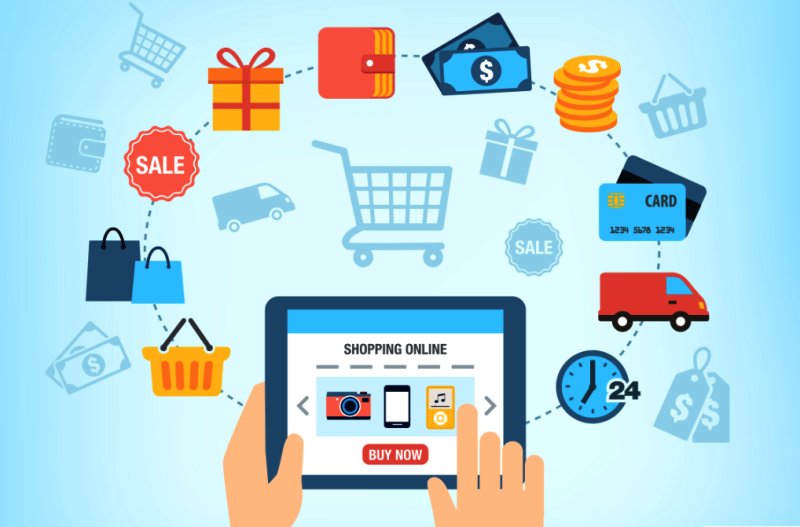The Ultimate Scope of Ecommerce - Technology Trends In 2023
Ecommerce has rapidly grown in popularity over the past few years, and it doesn't seem to be slowing down anytime soon. With more and more businesses and consumers turning to online shopping, it's essential to stay ahead of the curve and know the latest trends.

Ecommerce has rapidly grown in popularity over the past few years, and it doesn't seem to be slowing down anytime soon. With more and more businesses and consumers turning to online shopping, it's essential to stay ahead of the curve and know the latest trends.
In this blog post, we'll be discussing the current scope of e-commerce and the top five existing and upcoming trends in 2023. Keep reading to learn more about how e-commerce is changing and how you can prepare for the future.
The Scope Of eCommerce- Trends In 2023
The technological advancements in eCommerce website development & mobile apps are enabling businesses to excel in their growth while aligning customer needs & interests. Also, it is helping customers get whatever is required with a single click of their mouse.
So, let’s understand upcoming technology trends in eCommerce trends.
#1. Omnichannel Presence & Support
People today conduct their searches for a product or service across multiple platforms and devices. They expect the information about their purchase to be seamlessly accessible from these different sites and applications.
For this reason, e-commerce businesses should consider making themselves omnichannel - which means being capable of providing customers with what they want when. And how they want it - by adopting some of the newest web technologies available.
Some examples include
->Video chat that would allow your business to communicate face-to-face with clients wherever they are.
-> Co-browsing, that provides agents access to the customer's screen. So, they can troubleshoot any issue while looking directly over their shoulder.
-> Document interaction, which allows agents to safely view customers' files without having them download anything onto their own computer.
#2. Augmented Reality Experiences
Augmented reality doesn’t need an introduction in the space of eCommerce application development, and users enjoy virtual experiences a lot these days. Thus, the integration of AR technology to augment computer generate item images in real-world are quite popular.
By 2023, AR is expected to have a significant impact on e-commerce and traditional retail, as it enables brands to merge physically. And digital elements to provide customers with an enhanced shopping experience.
For example, shoppers can use augmented reality to try out products virtually before they buy them, which allows them to make more informed decisions. Additionally, AR can be used to bring products to life, with virtual images and animations appearing on physical products.
#3. Personalization
Technology has taken away the need for human interaction when it comes to business - which is why people are expecting more personalized experiences. A recent study found that over 78% of customers will disregard impersonalized offers from brands they aren't interested in.
When you employ Artificial Intelligence (AI) and machine learning (ML), there's an infinite amount of data available which can tell you what your users want or expect, so you'll never miss a trick again!
With this kind of smart personalization at work, marketers say they can see a 20-fold return on investment by offering an upsell or cross-sell service. Moreover, it makes it easy to increase revenue without relying too much on advertising alone!
#4. Chatbot
Chatbots are becoming so popular because they enable customers to quickly get information. This makes it easier for customers to find the product they’re looking for and receive answers to their questions in a timely manner.
Plus, chatbots are incredibly cost-effective when compared to traditional customer service representatives. As a result, many e-commerce companies have been leveraging this technology to save time and money.
#5. Image Recognition Turned into Product Recognition
Recently, smartphones got a new Image Recognition feature that is being applied to e-commerce. One of the new functions is that it recognizes what’s in an image, then presents you with its own related listings.
For instance, when you take a photo of something you want to buy, it scans all its own products to see if they match what you photographed.
Wrapping Up
The e-commerce industry is ever-changing, with new trends and technologies constantly emerging. The above five trends will greatly impact e-commerce in 2023 and beyond. By keeping abreast of these trends and others, businesses can stay ahead of the curve and benefit from the opportunities they present.
With an understanding of the current e-commerce landscape and an eye to the future, businesses can ensure that their e-commerce strategies remain competitive and successful. So, it is recommended to hire eCommerce developer with prolific experience & expertise.
What's Your Reaction?





















